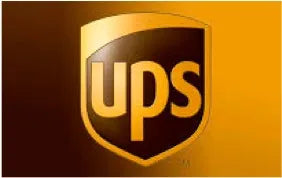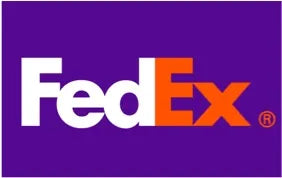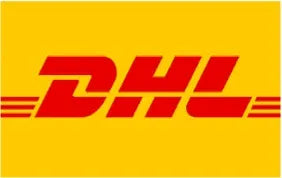The world of B2B wholesale eCommerce is evolving rapidly, presenting immense opportunities for businesses to expand their reach, streamline operations, and drive growth. However, navigating this landscape can be complex, requiring a deep understanding of key strategies, technologies, and best practices. In this comprehensive guide, we will delve into various aspects of B2B wholesale eCommerce, providing valuable insights, practical tips, and actionable steps to unlock its full potential.
Table of Contents
I、Understanding B2B Wholesale eCommerce
II、Building a Robust B2B Wholesale eCommerce Strategy
III、Selecting the Right B2B Wholesale eCommerce Platform
IV、Optimizing Product Catalog and Pricing
V、Streamlining Order Management and Fulfillment
VI、Enhancing Customer Experience and Engagement
VII、Marketing and Promoting Your B2B Wholesale eCommerce Store
VIII、Ensuring Security and Compliance
I、Understanding B2B Wholesale eCommerce
a. Exploring the B2B eCommerce Landscape
B2B wholesale eCommerce refers to the online buying and selling of goods and services between businesses. It involves transactions conducted in bulk quantities, typically between manufacturers, wholesalers, distributors, and retailers. The B2B eCommerce landscape has witnessed significant growth in recent years, driven by advancements in technology, changing buyer preferences, and the need for streamlined procurement processes.
b. Key Differences Between B2B and B2C eCommerce
While B2C (business-to-consumer) eCommerce focuses on selling products directly to individual consumers, B2B eCommerce operates on a larger scale and caters to the unique needs of businesses. Key differences include:
Complexity: B2B transactions often involve complex pricing structures, negotiated contracts, and customized product configurations to meet specific business requirements.
Customer Relationships: B2B eCommerce relies heavily on building and nurturing long-term customer relationships. Buyers seek factories who can provide consistent quality, reliable delivery, and excellent customer service.
Procurement Processes: B2B buyers follow established procurement processes, including request for proposal (RFP) submissions, vendor evaluations, and contract negotiations, to ensure optimal factory selection.
c. Advantages and Challenges of B2B Wholesale eCommerce
B2B wholesale eCommerce offers several advantages for businesses:
Expanded Market Reach: Online platforms enable businesses to reach a wider audience beyond their geographical boundaries, opening up new growth opportunities.
Streamlined Operations: eCommerce platforms automate various aspects of the buying process, including order placement, invoicing, and inventory management, leading to improved efficiency and reduced operational costs.
Enhanced Customer Experience: B2B eCommerce platforms provide self-service functionalities, personalized product recommendations, and real-time access to product information, enhancing the overall customer experience.
Despite its benefits, B2B wholesale eCommerce also presents challenges:
Complex Sales Cycles: B2B transactions often involve multiple decision-makers, lengthy sales cycles, and complex pricing negotiations, requiring careful management and coordination.
Integration Complexity: Integrating eCommerce platforms with existing back-end systems such as ERP (Enterprise Resource Planning) and CRM (Customer Relationship Management) can be challenging, necessitating robust integration solutions.
Changing Buyer Expectations: B2B buyers increasingly expect the same level of convenience, transparency, and personalization they experience in B2C eCommerce, necessitating continuous adaptation to meet evolving customer expectations.
By understanding the unique dynamics of B2B wholesale eCommerce, businesses can leverage its advantages while addressing the associated challenges. This understanding forms the foundation for developing a successful B2B eCommerce strategy and unlocking the potential of this transformative business model.
II、Building a Robust B2B Wholesale eCommerce Strategy
In the realm of B2B wholesale eCommerce, having a well-defined strategy is crucial to succeed and thrive in a competitive market. This section will delve into the key steps involved in building a robust B2B wholesale eCommerce strategy.
Defining Business Goals and Objectives:
Before diving into the intricacies of B2B wholesale eCommerce, it is essential to clearly define your business goals and objectives. These goals can range from increasing sales and market share to expanding into new markets or improving customer satisfaction. By establishing measurable and attainable goals, you can align your eCommerce strategy accordingly and measure your progress along the way.
Identifying Target Market and Customer Segments:
Understanding your target market and customer segments is vital for effective targeting and personalized marketing efforts. Analyze your existing customer base and conduct market research to identify key demographics, industries, and buyer personas. This knowledge will help you tailor your eCommerce platform, product offerings, and marketing campaigns to cater to the specific needs and preferences of your target audience.
Crafting a Unique Value Proposition:
In a crowded B2B wholesale eCommerce landscape, it is crucial to differentiate your brand and offerings. Develop a unique value proposition that highlights the key benefits and advantages your business provides to customers. This could be in the form of competitive pricing, exceptional customer service, a wide range of products, or specialized expertise. Your value proposition should resonate with your target market and serve as a compelling reason for them to choose your business over competitors.
Establishing Pricing and Terms:
Pricing plays a critical role in B2B wholesale eCommerce. Determine your pricing strategy based on factors such as production costs, market demand, competition, and customer expectations. Consider offering tiered pricing or volume discounts to incentivize larger orders. Additionally, establish clear terms and conditions, including payment methods, credit limits, and return policies, to build trust and streamline transactions with your customers.
Investing in a Scalable eCommerce Platform:
Selecting the right B2B wholesale eCommerce platform is essential for the success of your strategy. Look for a platform that offers robust features such as customer management, inventory tracking, order processing, and integration capabilities with other business systems. Consider scalability and customization options to accommodate future growth and adapt to evolving customer needs. A reliable platform like Marcothepolo can provide the necessary tools and flexibility to support your B2B wholesale eCommerce operations.
Implementing Effective Marketing and Sales Strategies:
To drive traffic and generate leads to your B2B wholesale eCommerce store, implement comprehensive marketing and sales strategies. Leverage digital marketing channels such as search engine optimization (SEO), content marketing, email marketing, social media, and paid advertising to reach your target audience. Additionally, equip your sales team with the necessary tools and training to effectively engage with potential customers and convert leads into sales.
Monitoring and Analyzing Performance:
Regularly monitor and analyze the performance of your B2B wholesale eCommerce store to identify areas for improvement and capitalize on opportunities. Utilize analytics tools to track key metrics such as website traffic, conversion rates, average order value, and customer retention. Based on these insights, make data-driven decisions to optimize your eCommerce strategy, refine marketing efforts, and enhance the overall customer experience.
By following these steps and continuously adapting to market trends and customer preferences, you can build a robust B2B wholesale eCommerce strategy that positions your business for long-term success in the digital landscape. Remember, Marcothepolo offers a user-friendly and customizable platform with comprehensive features to support your B2B wholesale eCommerce initiatives, helping you achieve your business goals effectively.
III、Selecting the Right B2B Wholesale eCommerce Platform
In the fast-paced world of B2B wholesale eCommerce, selecting the right platform is crucial for success. With numerous options available, it's essential to evaluate and choose a platform that aligns with your business goals, supports scalability, and offers the necessary features and functionality. In this section, we will explore the key considerations and steps involved in selecting the right B2B wholesale eCommerce platform.
Assess Your Business Needs and Goals:
Begin by clearly defining your business needs and goals. Consider factors such as the size of your business, target market, product catalog, and desired growth trajectory. Assess whether you require features like advanced product configurators, bulk order capabilities, integration with ERP systems, or support for multiple currencies and languages. Understanding your specific requirements will help you narrow down the options and find a platform that meets your needs.
Evaluate Platform Features and Functionality:
Evaluate the features and functionality offered by each platform. Look for essential B2B capabilities such as customizable pricing and discounts, customer-specific catalogs, RFQ (Request for Quote) functionality, and flexible payment options. Consider whether the platform supports integration with popular payment gateways, shipping providers, and other third-party applications you may need. A robust content management system (CMS) and marketing tools are also important for creating a compelling customer experience.
Scalability and Customization:
Ensure that the platform can scale with your business as it grows. Evaluate the platform's performance, stability, and ability to handle increasing traffic and transactions. Look for options to customize the platform to match your brand's unique identity and requirements. The platform should allow for easy customization of the user interface, layout, and branding elements to create a seamless and personalized experience for your customers.
Integration with Back-End Systems:
Consider the platform's ability to integrate with your existing back-end systems such as ERP, CRM, and inventory management. Seamless integration eliminates the need for manual data entry, reduces errors, and enables real-time synchronization of data. Look for platforms that provide APIs (Application Programming Interfaces) or pre-built connectors for easy integration with your preferred systems.
User-Friendly Interface and Administration:
A user-friendly interface is essential for both your customers and your internal team. The platform should offer intuitive navigation, quick search functionality, and easy-to-use shopping cart and checkout processes for customers. Additionally, the administration interface should be user-friendly, allowing your team to manage products, pricing, orders, and customer accounts efficiently.
Technical Support and Maintenance:
Consider the level of technical support and maintenance provided by the platform provider. Look for platforms that offer reliable customer support, including access to documentation, knowledge bases, and user forums. Evaluate the platform provider's reputation for responsiveness and problem resolution. Regular software updates, security patches, and ongoing platform maintenance are also important to ensure a stable and secure eCommerce environment.
Cost and Return on Investment (ROI):
Evaluate the cost structure of the platform, including any setup fees, licensing fees, transaction fees, and ongoing maintenance costs. Consider the return on investment (ROI) you can expect from the platform based on your projected sales growth, cost savings, and improved operational efficiencies. It's crucial to strike a balance between the platform's capabilities and its affordability within your budget.
IV、Optimizing Product Catalog and Pricing
a. Structuring and Organizing Product Categories:
An optimized product catalog is crucial for B2B wholesale eCommerce. Start by analyzing your product offerings and identifying logical categories that align with your target customers' needs. Consider factors such as industry, application, and product attributes. Structure your categories hierarchically, allowing for easy navigation and product discovery. Implement intuitive filtering options to help customers quickly find the products they need. Additionally, ensure that each product has accurate and detailed descriptions, specifications, and high-quality images to provide a comprehensive understanding of the offerings.
b. Implementing Dynamic Pricing Strategies:
Dynamic pricing allows for flexibility and personalized pricing based on various factors such as customer segments, order quantity, or contract agreements. Implement a pricing strategy that aligns with your business goals and market dynamics. Consider offering tiered pricing based on volume discounts, incentivizing customers to order larger quantities. Leverage customer segmentation to provide customized pricing for specific groups, such as loyal customers or high-value accounts. Implement real-time pricing updates to reflect market changes and ensure competitiveness.
c. Enhancing Product Information and Descriptions:
Detailed and accurate product information is essential to build trust and facilitate informed purchasing decisions. Optimize your product descriptions by highlighting key features, specifications, and benefits. Include technical specifications, dimensions, materials, and any certifications or compliance details. Consider including customer reviews and ratings to boost credibility. Furthermore, invest in professional product photography to showcase your offerings in the best light. Clear and visually appealing product images can significantly impact purchasing decisions.
d. Offering Product Bundles and Cross-Selling Opportunities:
Increase the value of each customer transaction by offering product bundles or cross-selling opportunities. Analyze your product catalog to identify complementary items that can be bundled together, providing convenience and additional value to customers. Implement recommendations or related product sections on product pages to encourage customers to explore additional offerings. This strategy can boost average order value and customer satisfaction.
e. Utilizing Data and Analytics:
Leverage data and analytics to gain insights into customer preferences, buying patterns, and market trends. Analyze sales data to identify top-selling products and optimize their visibility on your platform. Use analytics tools to track customer behavior, such as search queries, product views, and purchase history, and personalize product recommendations based on their interests. Data-driven decision-making allows for continuous optimization of your product catalog and pricing strategy.
By optimizing your product catalog and pricing, you can enhance the customer experience, drive sales, and improve customer satisfaction. Regularly evaluate and update your product offerings, pricing strategies, and catalog organization to stay relevant and competitive in the B2B wholesale eCommerce landscape. Remember to closely monitor customer feedback and market trends to adapt your approach accordingly and provide a seamless and compelling purchasing experience for your customers.
V、Streamlining Order Management and Fulfillment
Order management and fulfillment are critical aspects of B2B wholesale eCommerce. Efficiently managing orders and ensuring seamless fulfillment can greatly impact customer satisfaction and operational efficiency. In this section, we will explore strategies to streamline order management and fulfillment processes.
a. Implementing Efficient Order Processing Workflows:
Developing well-defined and streamlined order processing workflows is crucial for timely and accurate order fulfillment. Automating repetitive tasks, such as order confirmation, invoice generation, and inventory updates, can help reduce manual errors and save valuable time. Consider integrating an order management system (OMS) that centralizes order information, tracks order status, and automates order routing to the appropriate fulfillment centers.
b. Integrating Inventory Management Systems:
Integrating your B2B wholesale eCommerce platform with an inventory management system (IMS) allows for real-time inventory visibility. This integration enables accurate inventory tracking, preventing overselling or stockouts. With real-time updates, you can provide customers with accurate product availability information and set proper expectations. Additionally, an IMS can automate inventory replenishment and trigger purchase orders when stock levels reach predefined thresholds.
c. Ensuring Seamless Shipping and Logistics:
Efficient shipping and logistics play a vital role in delivering orders promptly. Establish partnerships with reliable shipping carriers that offer competitive rates and a range of delivery options. Integration with shipping management software can automate label generation, order tracking, and delivery notifications. Implementing a robust warehouse management system (WMS) can optimize order picking, packing, and shipping processes, reducing errors and improving order accuracy.
By streamlining order management and fulfillment processes, you can enhance operational efficiency, minimize errors, and provide a seamless experience to your B2B customers. Integrating an OMS, IMS, and WMS can automate tasks, improve inventory management, and optimize shipping processes, leading to faster order fulfillment and improved customer satisfaction. Continuously monitor and analyze these processes to identify areas for improvement and implement necessary adjustments to ensure ongoing efficiency and scalability.
VI、Enhancing Customer Experience and Engagement
In the competitive landscape of B2B wholesale eCommerce, providing a superior customer experience is crucial for attracting and retaining customers. By prioritizing customer satisfaction and engagement, businesses can differentiate themselves and foster long-term relationships. Here are key strategies to enhance customer experience and engagement:
a. Implementing Personalization and Customization Features:
Personalization is a powerful tool to create a tailored experience for each customer. Utilize customer data, such as purchase history and browsing behavior, to offer personalized product recommendations and targeted marketing campaigns. Enable customers to customize orders, pricing, and packaging options, catering to their unique needs. This level of personalization not only enhances the customer experience but also increases customer loyalty and satisfaction.
b. Enabling Self-Service Tools and Account Management:
Empower customers with self-service tools to manage their accounts, track orders, and access relevant information. Implement user-friendly dashboards where customers can view order history, manage billing and shipping details, and easily request support. By providing a seamless and efficient self-service experience, businesses can improve customer satisfaction and reduce customer service workload.
c. Leveraging Data and Analytics for Continuous Improvement:
Leverage customer data and analytics to gain insights into customer behavior, preferences, and pain points. Monitor key performance indicators (KPIs) such as customer satisfaction scores, conversion rates, and order fulfillment time to identify areas for improvement. Utilize customer feedback through surveys, reviews, and social media interactions to address concerns promptly and proactively. Continuously optimize the customer experience based on data-driven insights, ensuring that the eCommerce platform evolves with changing customer needs.
By implementing these strategies, businesses can create a customer-centric approach that fosters engagement and loyalty. Remember, a positive customer experience not only leads to repeat business but also generates positive word-of-mouth referrals and attracts new customers.
Remember to leverage the advantages of Marcothepolo, a platform that excels in enhancing customer experience. With features like personalized recommendations, self-service tools, and a user-friendly interface, Marcothepolo ensures that your customers have a seamless and satisfying experience throughout their journey. By partnering with Marcothepolo, you can provide your customers with a superior B2B wholesale eCommerce experience that sets you apart from the competition.
VII、Marketing and Promoting Your B2B Wholesale eCommerce Store
a. Developing a Multichannel Marketing Strategy:
To effectively market and promote your B2B wholesale eCommerce store, it is crucial to develop a comprehensive multichannel marketing strategy. Identify the channels that resonate best with your target audience, such as search engines, social media platforms, industry-specific forums, and email marketing. Craft compelling and targeted messaging for each channel to ensure maximum impact. Leverage search engine optimization (SEO) techniques to improve your store's visibility in organic search results, and consider investing in pay-per-click (PPC) advertising to drive targeted traffic to your site.
b. Leveraging Content Marketing and Thought Leadership:
Content marketing plays a vital role in establishing your B2B wholesale eCommerce store as a trusted authority in your industry. Create high-quality content that addresses the pain points and challenges faced by your target audience. This can include blog posts, whitepapers, case studies, and video tutorials. Share valuable insights, industry trends, and best practices to position your store as a thought leader. Collaborate with influencers and industry experts to amplify your reach and credibility.
c. Measuring and Analyzing Marketing Performance:
To optimize your marketing efforts, it is essential to track and analyze the performance of your campaigns. Utilize web analytics tools to measure key metrics such as website traffic, conversion rates, and customer engagement. Monitor the effectiveness of your marketing channels and campaigns to identify areas for improvement. Use A/B testing to experiment with different marketing strategies and optimize your messaging and targeting based on data-driven insights.
By adopting a well-rounded marketing approach that combines multichannel strategies, content marketing, and data analysis, you can effectively promote your B2B wholesale eCommerce store, attract the right customers, and drive meaningful growth. Remember to continuously refine your marketing strategy based on the evolving needs of your target audience and the changing dynamics of the B2B eCommerce landscape.
VIII、Ensuring Security and Compliance
In the fast-paced world of B2B wholesale eCommerce, ensuring the security and compliance of your platform and customer data is of utmost importance. Failing to prioritize security can result in data breaches, financial loss, reputational damage, and legal liabilities. In this section, we will explore key measures to adopt in order to safeguard your business and maintain compliance with relevant regulations and standards.
a. Implementing Robust Data Security Measures:
— Utilize Secure Socket Layer (SSL) encryption to protect sensitive data during transmission, such as customer information and payment details.
— Implement firewalls, intrusion detection systems, and antivirus software to safeguard your network infrastructure against cyber threats.
— Regularly update and patch your software systems to address vulnerabilities and stay protected against emerging security risks.
— Use strong, unique passwords and enable multi-factor authentication for user accounts to prevent unauthorized access.
— Conduct regular security audits and penetration testing to identify and address any vulnerabilities in your system.
b. Complying with Privacy Regulations and Standards:
— Familiarize yourself with the relevant privacy regulations, such as the General Data Protection Regulation (GDPR) in the European Union or the California Consumer Privacy Act (CCPA) in the United States.
— Obtain necessary consents and permissions from customers before collecting and processing their personal information.
— Implement privacy policies that clearly outline how customer data is collected, used, stored, and shared.
— Provide customers with options to manage their data preferences, including the ability to access, modify, and delete their personal information.
— Regularly review and update your privacy practices to align with evolving regulations and industry best practices.
c. Protecting Against Fraud and Cyber Threats:
— Implement robust fraud prevention measures, such as address verification, card security code verification, and device fingerprinting, to minimize the risk of fraudulent transactions.
— Educate your employees about phishing scams, social engineering techniques, and other cyber threats, and implement strict security protocols to prevent unauthorized access to sensitive information.
— Monitor and analyze user activities to detect and prevent suspicious behavior, such as multiple failed login attempts or unusual transaction patterns.
— Partner with reputable payment service providers and gateways that offer advanced fraud detection and prevention tools.
— Stay informed about the latest security threats and emerging technologies, and proactively update your security measures to mitigate potential risks.
By prioritizing security and compliance, you not only protect your business and customer data but also build trust with your customers, fostering long-term relationships and credibility. Regularly review and update your security practices to stay ahead of evolving threats, and ensure that you adhere to applicable regulations and standards. By doing so, you can create a secure and compliant B2B wholesale eCommerce environment for your business and customers alike.
Conclusion:
B2B wholesale eCommerce holds immense potential for businesses to drive growth and stay competitive in the digital age. By understanding the unique dynamics of B2B eCommerce, building a comprehensive strategy, selecting the right platform, optimizing catalog and pricing, streamlining order management, enhancing customer experience, and ensuring security and compliance, businesses can unlock the full potential of this transformative business model. Embrace the opportunities presented by B2B wholesale eCommerce, and embark on a journey of sustained success and growth.
You may also like:
10 Essential Tips for Successful B2B Wholesale Purchasing












0 comments